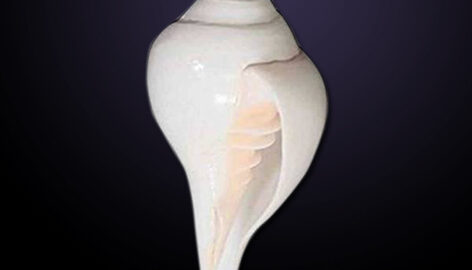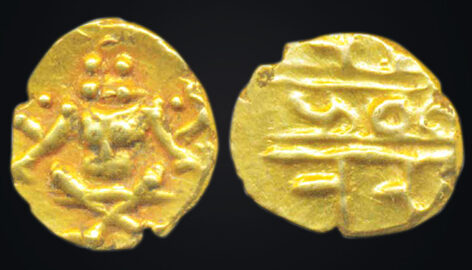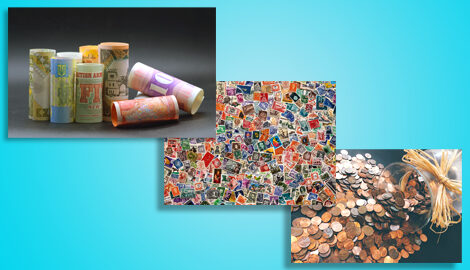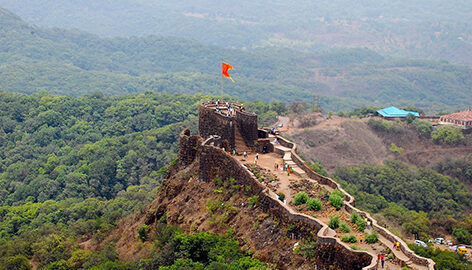
What is Conch or Shanka?
Conch or Shanka is a wonderful gift given by nature to mankind when blown produces a distinct sound that is considered to be auspicious and soul awakening. The blowing of Conch is the one religious practice followed from the ancient period. The magnificent snow-white gastropod shell is popularly known as the shank, in Sanskrit, it is popularly known as ‘Sankha’. It is considered as the symbol of purity, brilliance and auspiciousness. It is also well known by the name of the Conch. When the apex of the Shank is blown to form a whole, it produces a magnificent sound. Once Conch was also used as a medium of exchange and it was equivalent to coins in India. Conch Shell Vintage coins have great value in the Indian market. Continue reading Conch Shell Vintage coins: An illustration of Marine Treasure

The period of Republican in Rome saw the development in its monetary system later than the other empires around it. Before the introduction of coinage, Rome consists of two important forms of value in its economy Aes rude-an an irregular shaped piece of bronze and Aes signatum- cast flat bar made of bronze that needed to be weight in each transaction. Later on, heavy cast Bronze Roman coins called Aes Grave were introduced. The standard coin of the old Roman coins consist of AS and it was also the monetary unit. The start of the second Punic war also saw the introduction of the various small denomination like Unica, Semuncia, semis, Dupondius, Triens, sextans, quadrans, etc which were struck not cast also known as the early struck Roman Republican coinage. Continue reading Roman Republican Coinage: An overview

Dance is an expression of our inner emotions. It’s the means to connect with nature (Prakriti) for every dancer. Dance is an emotion, Dance is an Expression, Dance is freedom and Dance is a way of life. Continue reading Bharatnatyam Hasta Mudras Depicted on Coins

Kingdom of Mysore was a kingdom founded in the South-Indian region in 1399 CE. This kingdom was founded by Yaduraya in the region of the modern city of Mysore. The Kingdom of Mysore was ruled by the Wodeyar family, who once served as a feudatory of the Vijayanagara Empire until the empire’s decline in 1565. Continue reading Kingdom of Mysore

The world’s most ancient and popular hobbies are collecting coins, stamps, and banknotes, yet collectors are not very sure which one to pick and where to store. This blog will help you in understanding, exploring, and learning the Collection Methodology of Coins/ Stamps/ Notes. Continue reading Explore and Learn the Collection Methodology of Coins, Stamps, Notes!

Ottoman Empire created by Turkish tribes in Anatolia (Asia Minor) that grew to be one of the most powerful states in the world. The Ottoman period spanned more than 600 years and came to an end only in 1922 when it was replaced by the Turkish Republic and various successor states in southeastern Europe and the Middle East. The term Ottoman is a dynastic appellation derived from Osman I (Arabic: ʿUthman), the nomadic Turkmen chief who founded both the dynasty and the empire about 1300. The original coinage of the Ottoman Empire consisted of small silver coins (akche, called asper by Europeans). Continue reading Coinage of the Ottoman Empire

The Maratha Empire is one of the most important factors in Indian history. The Maratha Empire came to the power with the emergence of Chhatrapati Shivaji Maharaj, after his coronation in 1674 and ended with the defeat of Peshwa Bajirao II at the hands of the British East India Company. After the fall of the Kingdom of Yadavas to Allauddin Khilji, they lost their independence but acquired political and military experience, for the next few centuries by serving under various sultanates of Deccan. The coins throw the light on the times of Marathas as well as the contemporary history of India. The history of India is incomplete without the Marathas and their Coins. Continue reading Marathas and their Coins

‘Raja Harishchandra’ is touted to be the first Indian film. While making his film, Dadasaheb Phalke had to come across several challenges. The biggest one was to search for a woman who would be the heroine in the film. Continue reading Legendary Actresses of Indian Cinema featured on Stamps

Deities were common deception on the reverse of the Roman coins. These were used if an emperor wished to be associated with attributes of the particular gods and goddess. More often gods were used rather than goddesses. For example, if the emperor wanted to appear peaceful he could depict ‘Minerva Pacifiera’ as the ‘Bringer of peace’. Furthermore, the deities were depicted by the Emperors so they can use the image to suggest the gods approved of and support their reign or associate themselves with the divine as Julius Caesar did with his depiction of Goddesses Venus Continue reading Divinity: Goddesses on the Roman coins II

The period of the 17th century was an era of chaos and general discontent among the Hindu population of the Deccan. People secretly desired a saviour who could eliminate the injustice and promise them the land to call their own. The liberator finally arose. Armed with the concept of Hindavi Swarajya, a young Maratha man rose to prominence. History knows him as “the Great Maratha Chhatrapati Shivaji Maharaj” and this is the life story of Chhatrapati Shivaji Maharaj. Continue reading Life Story of Chhatrapati Shivaji Maharaj